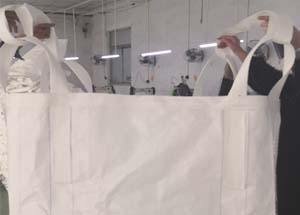
The price of container bags sometimes varies according to the price of materials.
Например, many enterprises use non-woven fabrics to sew container bags. What are the advantages of making гигантские сумки from non-woven fabrics? Non-woven fabric (polyester non-woven fabric, non-woven fabric) is also known as geotextile, which is a kind of permeable geosynthetic material and is formed by needling or weaving synthetic fibers. Burning wool non-woven fabric has excellent filtration, isolation, enhanced protection, high tensile strength, good permeability, high-temperature resistance, antifreeze, aging resistance, and corrosion resistance.
- Pavement method of non-woven fabrics:
Cold rolling with manual service; Nylon cloth should be leveled and maintain a moderate deformation capacity.
The installation of polyester filament or polyester staple non-woven fabric is generally based on overlapping, sewing and electric welding of steel bars. The total width of sewing and electric welding is generally 0.1μm or more, and the total overlapping width is generally 0.2M or more. Non-woven fabrics that will be exposed for a long time shall be welded or sewn by electric welding.
2, non-woven fabric pavement processing technology:
Storage, транспорт, and solution of non-woven fabrics
Burnt nonwoven rolls should be maintained from damage before installation. Non-woven fabric rolls should be piled up in areas without water. The height-to-width ratio of the stacks should not exceed four rolls, and the resolution of wire rope rolls can be seen. Non-woven fabric rolls must be covered with opaque raw materials to avoid UV embrittlement. In the storage process, the consistency of identification and data information should be maintained.
During the whole transportation process, the non-woven fabric roll must be protected from damage (including on-site transportation from raw materials storage to work).
Be sure to repair the non-woven fabric roll damaged by physics. Non-woven fabrics that are seriously damaged cannot be used. All non-woven fabrics that come into contact with leaked chemicals are not allowed to be used in this new project.
- Non-woven fabric splicing
All splices must be carried out continuously (например, point splicing is not allowed). Before overlapping, spunlaced nonwoven must overlap less than 150 мм. Smaller needle gauge selvages (exposed edges of raw materials) shall be at least 25 мм.
The self-hand woven non-woven fabric connector comprises a 1-thread and a thread chain sewing mode. The thread used for sewing should have a strength of over 60N and be equivalent
Composite resin with acid resistance and ultraviolet resistance on or above nonwoven fabric.

